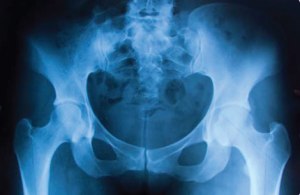 The day had arrived for my appointment with the pain specialist and it was, appropriately, gray and rainy. As I thought about the appointment, my heart started beating faster. I was in my 20s when I had the last appointment with the plastic surgeon for my leg and I’d forgotten the anxious feeling that always arrived with those appointments. It was back.
The day had arrived for my appointment with the pain specialist and it was, appropriately, gray and rainy. As I thought about the appointment, my heart started beating faster. I was in my 20s when I had the last appointment with the plastic surgeon for my leg and I’d forgotten the anxious feeling that always arrived with those appointments. It was back.
I breathed deeply and tried to exhale the anxiety, which probably only made it worse. I’d had maybe 20 plastic surgeries and debridement procedures for the burn. When I had the last surgery at 18, I remember waking up in the middle of the procedure lying face down and gagging on the breathing tube. Then the memory went back further. I was maybe 3 years old and I couldn’t walk. During the roughly three months in the hospital, I was kept immobile in a crib covered with netting so I couldn’t get out. It took months of painful physical therapy to re-learn how to walk.
These memories swirled in my head as I sat in the waiting room, feeling increasingly light headed. “Gallagher,” the receptionist called. When the nurse walked me to the exam room and took my vitals, my blood pressure, normally 110/70, had inched up to 140/80.
Dr. F. walked in and immediately put me at ease. “I read all your forms,” she said as she examined my burned leg and did a reflex check of both legs. She asked again about the injury as she had me do a series of movements with my arms and legs. “I’d like you to have x-rays taken but I think I know the source of your pain. It’s an SI injury. We can fix this.”
SI, or the sacroillac joints, connect the spine to the pelvis. The most common symptom of SI joint dysfunction is pain, often experienced in the back of the hips, the thighs or in my case, the groin. “How would I have done this?” I asked. Apparently even stepping the wrong way can create this condition but any condition that alters the normal walking pattern can put stress on the SI joints.
Among other things, my prescription includes a series of manipulations to my pelvis to move it into alignment and six weeks of physical therapy. Dr. F. offered me steroid injections as well to treat the inflammation and relieve the pain thought I’m not so sure how I feel about that. I’m not partial to shots.
It’s nice to feel ‘fixable’ and even better that this really had nothing to do with my burned leg injury.
“We see injuries all the time,” Dr. F. noted when she did her exam. “Nothing really surprises us any more.”
I should have known.